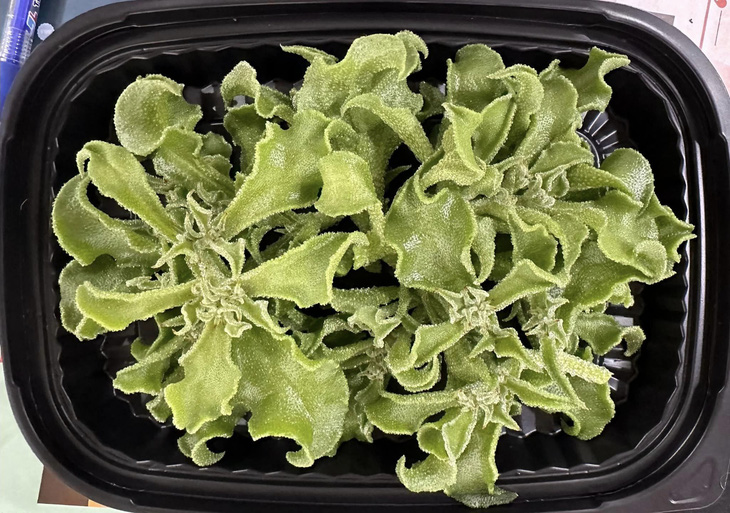An Giang University, located in the namesake province in Vietnam’s Mekong Delta region, has managed to grow ice plants, an edible plant of Japanese origin, in the school’s net house after a decade of efforts, according to the school’s president Vo Van Thang.
Japan’s Saga University earlier provided the seedlings of ice plants, aka Tsuburina, for An Giang University to research and trial growing the plant, as part of an agricultural cooperation project between the two universities.
“It’s been around ten years since we came to Saga University and started our cooperation project," Thang recalled.
“Our efforts to grow ice plants failed multiple times due to unsuitable climate and soil conditions.
"Therefore, we continued to study and adjust our methods to grow the plant after each failure.
“This is the first time that the plant has grown healthily in the school’s net house."
Ice plants are edible and can be used in the cosmetics industry.
Further, it is capable of absorbing salt in the soil and is beneficial to the Mekong Delta region, which is affected by saline intrusion and climate change. Besides, ice plants are rich in nutrition.
Given the benefits of the plant, An Giang University opted to research and grow it on a trial basis, Thang said.
Saga University and some Japanese prefectures are home to many ice plant farms. The plant sells for around US$80 per kilogram in Japan.
Following the successful cultivation of ice plants at An Giang University, the school is set to expand the growing scale in the net house to examine the adaptability of the flora.
Growing the plant outside the school’s net house may be risky and cost a lot of money.
Hence, this can be done only after the expanded cultivation in the net house proves effective and enterprises make investments in the project, Thang said.
Earlier, a public organization in Vietnam reportedly piloted growing ice plants to no avail.
Like us on Facebook or follow us on Twitter to get the latest news about Vietnam!


















































